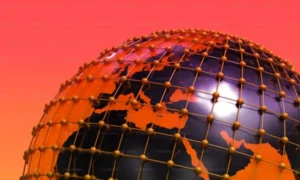
Introduction
Direct-to-Film (DTF) printing is a groundbreaking technology that has revolutionized the textile printing industry. Unlike traditional methods, the DTF printer offers a versatile, efficient, and cost-effective way to print high-quality images and designs on various fabrics. This article delves into the intricacies of DTF printers, exploring their benefits, how they work, their applications, and why they are becoming the preferred choice for many in the industry.
What is a DTF Printer?
The Basics of DTF Printing
A DTF printer prints designs directly onto a special film, which is then transferred to the fabric using a heat press. This method allows for vibrant, detailed prints on a wide range of materials, including cotton, polyester, and blends. The process is straightforward yet innovative, providing a new level of flexibility and efficiency in textile printing.
Components of a DTF Printer
A typical DTF printer setup includes a modified inkjet printer, special DTF inks, transfer film, and a heat press. The printer uses CMYK and white inks to create detailed and opaque prints. The transfer film holds the ink until it is transferred to the fabric, while the heat press ensures the design adheres properly, resulting in a durable and high-quality print.
Advantages of Using a DTF Printer
Versatility and Compatibility
One of the key advantages of a DTF printer is its versatility. It can print on a wide variety of fabrics, including cotton, polyester, and even dark fabrics. This compatibility makes it an ideal choice for custom apparel businesses, allowing them to offer diverse products without needing multiple types of printers.
High-Quality Prints
DTF printers produce high-quality prints with vivid colors and fine details. The use of white ink ensures that designs stand out on any color fabric, including dark materials. The result is a print that is both eye-catching and durable, capable of withstanding numerous washes without fading.
Cost-Effectiveness
Compared to other printing methods, DTF printers are relatively cost-effective. They require fewer materials and less maintenance, reducing overall production costs. Additionally, the ability to print on demand eliminates the need for large inventory, further saving costs for businesses.
Efficiency and Speed
DTF printers offer a fast and efficient printing process. Once the design is printed on the film, it can be quickly transferred to the fabric using a heat press. This rapid process is ideal for businesses that need to fulfill large orders quickly without compromising on quality.
How Does a DTF Printer Work?
Step-by-Step Process
Designing the Print
The first step in the DTF printing process is designing the print. This is usually done using graphic design software where the user creates or imports the desired image or text. The design is then prepared for printing by ensuring it fits within the printable area of the film.
Printing the Design
Once the design is ready, it is printed onto the DTF film using the DTF printer. The printer lays down a layer of colored ink followed by a layer of white ink to ensure the design is opaque and vibrant. The film is then allowed to dry, either naturally or using a curing device.
Applying the Adhesive
After printing, a powdered adhesive is applied to the printed film. This adhesive will help the design bond with the fabric during the heat press process. The adhesive is typically applied manually and then cured to ensure it adheres properly to the ink.
Heat Pressing
The final step involves transferring the design from the film to the fabric using a heat press. The film is placed on the fabric, and heat and pressure are applied to transfer the design. Once the transfer is complete, the film is peeled away, leaving the design on the fabric.
Applications of DTF Printers
Custom Apparel
One of the most popular applications of DTF printers is in the creation of custom apparel. Businesses can use DTF printing to produce custom t-shirts, hoodies, and other clothing items with intricate designs and vibrant colors. This capability is especially beneficial for small businesses and start-ups looking to offer unique products.
Promotional Products
DTF printers are also ideal for producing promotional products. Items such as tote bags, caps, and aprons can be customized with company logos or promotional messages using DTF printing. The high-quality prints ensure that the promotional items look professional and appealing.
Fashion and Retail
In the fashion and retail industry, DTF printers provide designers with the flexibility to experiment with different designs and fabrics. They can create limited edition items or prototype new designs quickly and cost-effectively. This agility allows fashion brands to respond rapidly to market trends and customer preferences.
Home Decor
Beyond apparel, DTF printing can be used for home decor items such as cushion covers, tablecloths, and wall hangings. The ability to print detailed and vibrant designs on various fabrics makes DTF printers a versatile tool for home decor businesses.
Choosing the Right DTF Printer
Factors to Consider
Print Quality
When selecting a DTF printer, it is crucial to consider the print quality. Look for printers that offer high resolution and vibrant color output. The ability to print fine details and gradients is also important for achieving professional results.
Compatibility
Ensure that the DTF printer you choose is compatible with the types of fabrics you plan to print on. Some printers may be better suited for certain materials, so it’s essential to match the printer’s capabilities with your specific needs.
Cost
While DTF printers are generally cost-effective, prices can vary significantly. Consider your budget and the long-term cost implications, including the cost of inks, films, and maintenance. It may be worth investing in a higher-end model if it offers better durability and print quality.
Support and Maintenance
Choose a DTF printer from a reputable manufacturer that offers good customer support and maintenance services. Regular maintenance is essential for keeping the printer in optimal condition and ensuring consistent print quality.
Maintenance and Troubleshooting
Regular Cleaning
Regular cleaning is crucial for maintaining a DTF printer. Inkjet nozzles can become clogged, affecting print quality. Follow the manufacturer’s guidelines for cleaning and maintenance to keep the printer running smoothly.
Troubleshooting Common Issues
Ink Clogging
Ink clogging is a common issue with DTF printers. Regular cleaning and using high-quality inks can help prevent this problem. If clogging occurs, follow the printer’s cleaning cycle to clear the nozzles.
Poor Adhesion
If the printed design does not adhere well to the fabric, it could be due to insufficient heat or pressure during the transfer process. Ensure that the heat press is set to the correct temperature and pressure for the fabric type.
Color Inconsistency
Color inconsistency can be caused by various factors, including low-quality inks or incorrect printer settings. Use high-quality inks and calibrate the printer regularly to ensure consistent color output.
Future of DTF Printing
Technological Advancements
The future of DTF printing looks promising with ongoing technological advancements. Newer models of DTF printers are expected to offer even higher print quality, faster speeds, and better compatibility with a broader range of fabrics. These advancements will further cement DTF printing as a preferred method in the textile industry.
Expanding Applications
As the technology continues to evolve, the applications of DTF printers are expected to expand beyond textile printing. Potential areas include custom footwear, sports equipment, and even industrial applications. The versatility and efficiency of DTF printing make it suitable for a wide range of uses.
FAQs
What is a DTF printer?
A DTF printer is a type of printer that prints designs directly onto a special film, which is then transferred to fabric using a heat press. This method allows for high-quality prints on various materials, including cotton, polyester, and blends.
How does a DTF printer work?
A DTF printer prints a design onto a film using colored and white inks. The printed film is then coated with an adhesive powder and transferred to fabric using a heat press. The heat and pressure ensure that the design adheres to the fabric.
What are the benefits of using a DTF printer?
The benefits of using a DTF printer include its versatility, high-quality prints, cost-effectiveness, and efficiency. DTF printers can print on a wide range of fabrics, produce vibrant and detailed designs, and offer a fast and cost-effective printing process.
Can DTF printers print on dark fabrics?
Yes, DTF printers can print on dark fabrics. The use of white ink ensures that the designs are opaque and stand out on any color fabric, including dark materials.
How do I maintain a DTF printer?
Maintaining a DTF printer involves regular cleaning, using high-quality inks, and following the manufacturer’s guidelines for maintenance. Regular maintenance helps prevent issues such as ink clogging and ensures consistent print quality.
Conclusion
In conclusion, the DTF printer is a revolutionary technology that offers numerous benefits for the textile printing industry. Its versatility, high-quality prints, cost-effectiveness, and efficiency make it an ideal choice for businesses looking to produce custom apparel, promotional products, and more. As the technology continues to advance, the applications of DTF printing are expected to expand, further cementing its position as a leading printing method.




